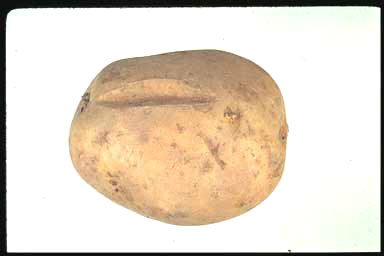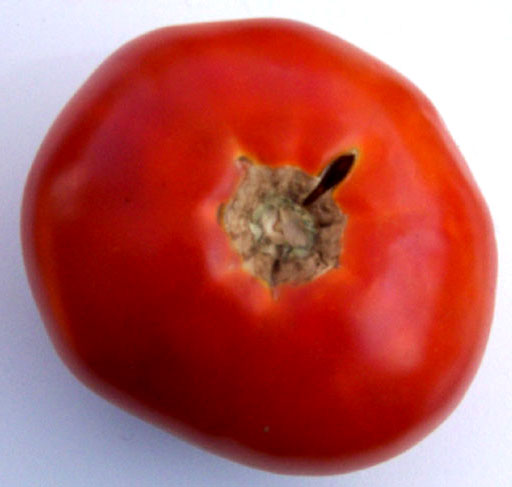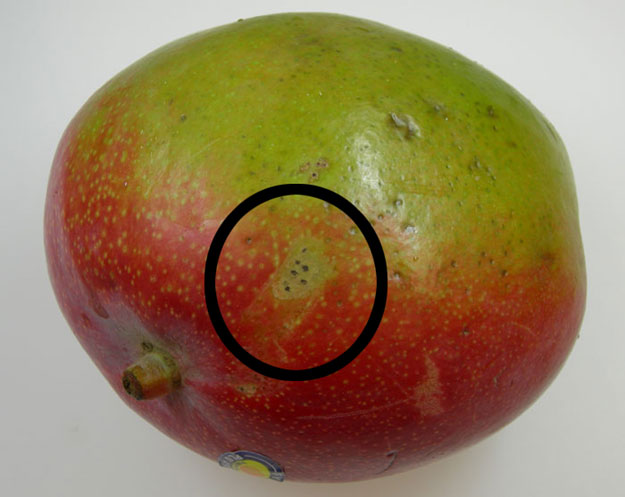In many of these past posts I have referenced the defect “growth cracks” quite a few times. There may be few of you that are not really clear on what a growth crack is, or how it is different from a scar. To begin with, both scars and growth cracks are considered to be quality defects. Which means these defects do not change or become worse, after they are picked or harvested.

The potato above has a growth crack. The crack develops while the potato is in the ground, growing. Due to heavy rains, or too much fertilizer, the potato has a sudden growth spurt, leaving a furrow or crack in the potato. The potato continues to grow in the ground, and the growth crack heals over. In addition to potatoes you will find growth cracks affecting tomatoes, carrots and celery, just to name a few.

Depending on the commodity, growth cracks will have different attributes. If you have ever grown tomatoes yourself, after a heavy rain you will no doubt come across some tomatoes that have split at the stem end. These splits are called growth cracks.

Scars, on the other hand, are not due to rapid growth. Scars can be caused by many different things, insects, disease, or simply from a limb or leaf rubbing against the fruit or vegetable while growing. Scars will range in color, in texture, and may or may not have depth associated with the injury.
So, when you come across scoring guidelines for scars or for growth cracks, they are specific defects. It is important you are able to differentiate between the two defects, as they always have unique scoring guidelines.

No Comments on “Growth Cracks/Scars”